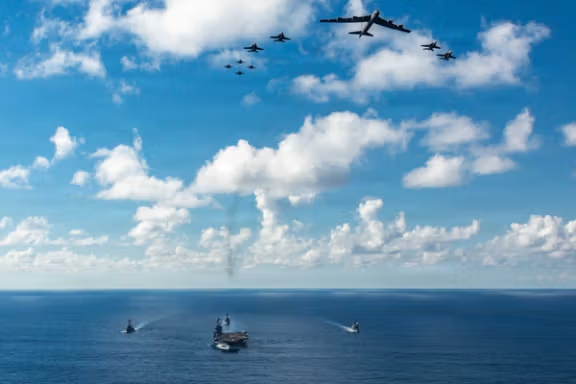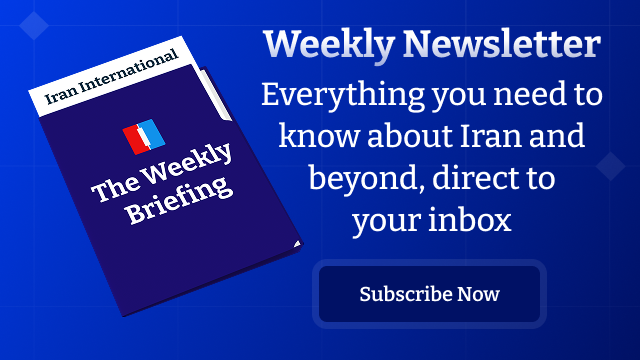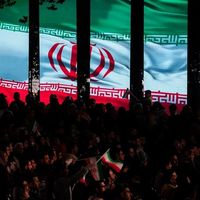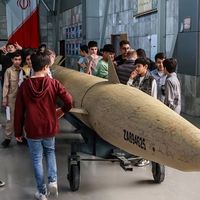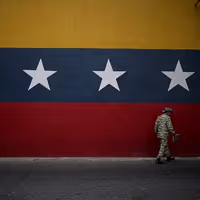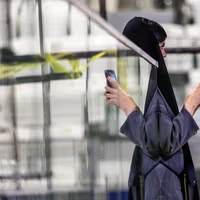In the 1975 conversation with celebrated Egyptian journalist Mohamed Hassanein Heikal, then editor of Al-Ahram, the Shah boasted about Iran’s military buildup, including air defenses capable of striking targets a few hundred kilometers beyond Iranian airspace.
“We wish to be powerful in the region where we live,” he told Heikal, adding that “no government would base its defensive policy” on appearing weak—a line that now echoes in the rhetoric of Iran’s current leadership.
The interview was republished by the Khabar Online news outlet, which is close to Ali Larijani, a veteran political insider, Iranian security chief and confidante of Iran's Supreme Leader Ali Khamenei.
Tehran has stepped up visual references to Iran's mythical and pre-Islamic past since a punishing June war with Israel in the United States, in a move once unthinkable for the imagery's association with the ousted monarchy.
Likely a bid to bolster popular support, the strategy had previously stopped short of outright references to the royal family.
“The military force we are building is meant to confront those who threaten us,” the Shah, who was dethroned in the 1979 Islamic Revolution, said.
“I do not want Iran to have a nuclear bomb for two reasons,” he continued. “One is the cost, and the other is that we do not have the means—such as ships or missiles—to carry the bomb to its target.”
Yet he added pointedly: “If someone comes out of the bush and wants to have a nuclear bomb in this region, Iran should undoubtedly have one of those bombs too.”
Curious timing
Khabar Online said the remarks were part of a broader exchange reflecting Iran’s growing self-assertion during the oil-boom years.
Like other encounters between the late Shah and media figures such as Mike Wallace, Oriana Fallaci and Barbara Walters, Heikal’s questioning was probing—and the Shah relished the opportunity to rebut his interviewer.
At one point, he scolded Heikal for misnaming the Persian Gulf and “misstating facts” about Iran, a scene that captured his combative, self-assured style.
“The Shahanshah was very serious in his statements and he believed in what he said,” Heikal later recalled, deploying a term meaning king of kings. “I did not expect that, and I did not have an answer to convince him.”
The Shah, aware of Heikal’s ties to Egypt’s late president Gamal Abdel Nasser and his sympathy for Iran’s ousted premier Mohammad Mossadegh, used the interview to frame Iran as a regional power surrounded by covetous rivals.
“We wish to have good ties with the Arab world,” he told Heikal, comparing Iran’s armed forces to “a lock on a door” and describing deterrence as “an opportunity for our friends and anyone else who wishes to help us.”
On Israel and Iran’s future
In another passage that might resonate in Tehran today, the Shah dismissed Israeli criticism while cautioning its leaders against overreach.
“The Israeli press are the only ones that heavily attack us,” he said. “But we are not bothered by that. We have told Israeli leaders they cannot occupy the entire Arab world … but the Israelis do not take any advice.”
In the West, the interview is remembered less for its atomic undertones than for the Shah’s sweeping ambition.
“I want the standard of living in Iran in ten years’ time to be exactly on a level with that in Europe today,” he said. “In twenty years’ time we shall be ahead of the United States.”
Half a century later, its selective resurrection serves as a reminder that Tehran’s language of power transcends time—and the ruler’s outfit.

